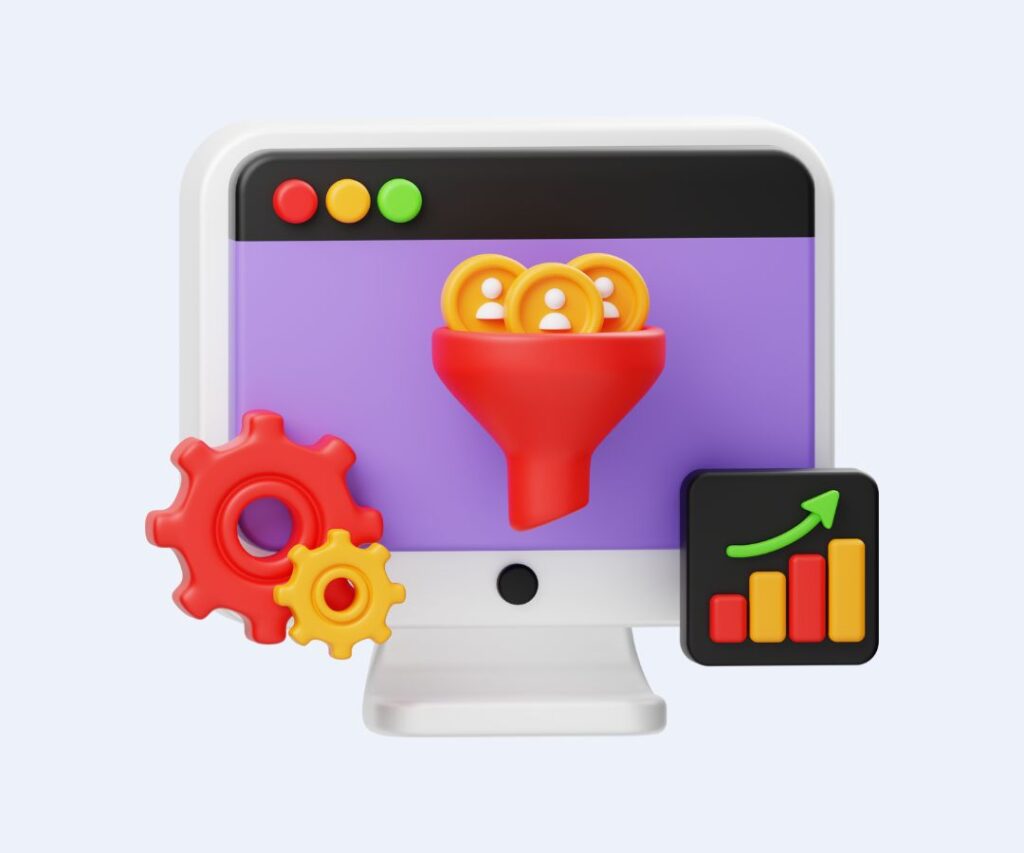In the dynamic world of Salesforce, optimization is not just about maintaining a well-functioning CRM. There are over hundreds different elements one can optimize within its ecosystem. So, optimizing is more about locating the specific function and unlocking the full potential of your Salesforce environment to meet your specific business needs.
Table of Contents
The Need for Specific Salesforce Optimization in Tech Enterprises
As organizations scale, Salesforce instances can quickly become overburdened with data complexity, user activity, and process workflows. Without regular Salesforce performance optimization and process automation, businesses may face slow load times, sluggish user experiences, and fragmented processes—issues that ultimately impact user adoption, data integrity, and operational efficiency.
Optimization isn’t just about speeding up the system; it’s about ensuring your Salesforce architecture supports the business logic, performance requirements, and evolving needs of your enterprise. This includes ensuring that your CRM integrates seamlessly with other platforms, handles complex data operations, and scales without compromising performance.
Our Method
When we work with Salesforce optimization, we focus on maximizing performance, fine-tuning architecture, and automating business-critical processes. With our deep expertise in Salesforce’s technical ecosystem, we empower tech enterprises to build more efficient, scalable, and high-performance Salesforce environments that drive real business results.

Key Areas of Salesforce Optimization
Salesforce developers usually approach Salesforce optimization with a technical focus on solving some of the most common and challenging issues faced by tech enterprises. Below are the primary areas we focus on when optimizing Salesforce for performance and automation.
1. Salesforce Performance Tuning
Performance optimization is critical to maintaining a responsive, user-friendly Salesforce environment, especially as the data volume and complexity grow. Here’s how we help enterprises optimize their Salesforce performance:
- Database Optimization: Salesforce’s data models can become inefficient over time, especially when working with large datasets. We optimize Salesforce objects and indexes, ensuring efficient SOQL queries and data retrieval. By reviewing and enhancing relationship mappings and data structures, we reduce query times and improve overall system speed.
- Apex Code Optimization: Complex business logic in Apex can cause performance issues if not carefully optimized. We perform a thorough audit of Apex classes, triggers, and batch jobs to streamline code execution, reduce governor limits, and avoid bottlenecks. Techniques like bulkification and asynchronous processing (batch, queueable, future methods) are employed to improve scalability and reduce execution times.
- Salesforce Lightning Performance: Lightning’s modern UI offers flexibility but may slow down as data complexity increases. We optimize Lightning Web Components (LWC) and Aura Components, focusing on reducing load times, minimizing render blocking, and utilizing client-side caching to enhance user experience.
- Data Storage & Archiving: Managing data efficiently is key to maintaining Salesforce performance. We optimize data storage strategies, using Salesforce Big Objects, archiving old records, and leveraging Heroku for large-scale data storage and processing needs.
2. Salesforce Process Automation
Salesforce provides a robust set of tools for automating business processes, but the sheer volume of automation options can be overwhelming. At Oktana, we specialize in configuring, designing, and optimizing automation solutions to drive operational efficiency and eliminate manual tasks:
- Flow Automation: We build powerful Salesforce Flows that automate business processes such as lead management, order processing, and approvals. By using Flow Builder in combination with Apex triggers and Process Builder, we automate complex workflows while keeping the system performant.
- Advanced Workflow Rules & Process Builder: Automating standard workflows through Process Builder and Workflow Rules ensures consistency in business operations. We optimize these tools for complex use cases, such as cross-object updates and custom approval processes.
- Integration Automation: Many tech enterprises require data to flow between Salesforce and various external systems. We implement API-based integrations, leveraging Salesforce Connect, Heroku Connect, and MuleSoft to automate data exchanges and real-time updates with systems like ERPs, marketing platforms, or third-party applications.
- Automated Reporting: Complex reports can be automated and scheduled for delivery, ensuring stakeholders always have real-time, accurate data. We configure report automation and dashboard notifications, empowering users to make data decisions with minimal manual intervention.
3. Custom Application Development with Heroku for Salesforce Optimization
Optimizing Salesforce often requires going beyond native features to support business-specific needs—especially when dealing with custom workflows, external-facing apps, or large-scale data operations. Heroku provides a platform to build and manage these extensions without compromising the performance or stability of the Salesforce environment.
- Building Scalable Applications Outside of Core Salesforce
A Salesforce developer can use Heroku to build custom applications in languages like Node.js, Python, Java, or Ruby. These apps can integrate with Salesforce through REST APIs or Heroku Connect, allowing critical functions to run outside of Salesforce. This reduces load on the CRM, maintains performance, and supports more advanced or tailored functionality that would be difficult to manage inside the standard Salesforce setup. - Using Heroku Postgres to Offload and Optimize Data Handling
Heroku Postgres can act as an external data layer to handle large datasets or high-frequency operations. During optimization, developers can offload heavy data processing tasks to Postgres and sync only the necessary data back into Salesforce. This approach reduces storage and compute strain on Salesforce while still providing real-time or near-real-time access to relevant data. - Implementing Real-Time Architecture with Heroku Kafka
Heroku Kafka can support an event-driven architecture that improves automation and responsiveness across systems. By streaming data between Salesforce and other applications or services, a developer can create a loosely coupled system where data flows efficiently without overwhelming Salesforce APIs or processing limits. - Deploying AI Models Without Slowing Salesforce Down
Machine learning models can be deployed on Heroku using frameworks like TensorFlow or PyTorch. These models can run predictions or process data externally and then push results back into Salesforce for use in workflows, reports, or automation. This allows Salesforce to benefit from advanced analytics while keeping core processes lightweight and responsive.

4. Continuous Improvement and Monitoring
Salesforce optimization doesn’t stop once the implementation is complete. Continuous improvements need to be implemented o ensure your Salesforce environment evolves with your business:
- Monitoring: Using tools like Salesforce Shield and New Relic, we provide ongoing monitoring of performance metrics, identifying potential bottlenecks and proactively addressing issues before they impact users.
- Proactive Issue Resolution: We conduct regular performance audits, ensuring that new Salesforce features, changes in data volume, and evolving business needs don’t disrupt system performance. This approach helps maintain stability even as Salesforce configurations and integrations grow.
5. Advanced Data Processing & ETL Optimization
For businesses that require handling large datasets or integrating with external systems, ETL (Extract, Transform, Load) processes are critical. We help optimize and manage these processes to ensure data is processed efficiently:
- Salesforce ETL Automation: Using Salesforce Data Loader, MuleSoft, and Informatica, we streamline ETL workflows to ensure that your data flows seamlessly between Salesforce and external systems, eliminating manual data entry and improving accuracy.
- Custom Data Pipelines: We build custom data pipelines for complex data transformations, ensuring that data is cleansed, transformed, and loaded into Salesforce in real-time or in scheduled batches, without impacting CRM performance.
- Data Validation & Error Handling: We implement automated data validation rules and error handling protocols during the ETL process, ensuring that only clean, error-free data enters Salesforce.
- Scalable Data Architecture for Growth and Performance: As data volumes grow, ETL processes must scale without slowing down Salesforce. Developers can design a scalable data architecture by using tools like cloud-based data warehouses (e.g., Snowflake, Redshift) in combination with middleware platforms. This setup allows high-volume data operations.
6. Microservices Architecture for Salesforce Optimization
To improve performance, flexibility, and scalability in Salesforce environments, we use microservices and serverless computing. These approaches allow businesses to manage and grow their Salesforce systems more efficiently.
- Salesforce Functions for Offloading Complex Workloads
Salesforce Functions let us move heavy tasks—like data processing or machine learning—outside the main Salesforce environment. This keeps the core system fast and responsive, even when handling complex or resource-intensive operations. - Microservices for Flexible and Scalable Architecture
We break down large, tightly connected Salesforce applications into smaller services. Each service can be updated, scaled, or replaced without affecting the rest of the system. This makes it easier to roll out changes, reduce downtime, and support long-term growth. - Event-Driven Microservices for Better Integration
Using Salesforce Platform Events, along with tools like Kafka and AWS Lambda, we build systems where services communicate through events. This allows each service to work independently, which improves reliability and keeps the Salesforce environment running smoothly—even as the number of connected systems increases.
Why Choose Oktana for Salesforce Optimization?

Partnering with Oktana for your Salesforce optimization needs provides your enterprise with the technical expertise required to ensure your Salesforce environment is efficient, scalable, and aligned with your strategic business objectives:
- Technical Excellence: With over a decade of experience optimizing Salesforce instances, we understand the intricacies of both large-scale deployments and complex use cases. Our team includes Salesforce-certified developers, architects, and integration specialists who focus on performance and automation.
- Custom Solutions: Whether you need advanced Apex development, optimized data management, or bespoke integrations with external systems, Oktana offers tailored solutions that ensure your Salesforce environment evolves with your business.
Proven Track Record: As a trusted Salesforce Summit Partner, Oktana has successfully delivered hundreds of optimization projects, helping organizations streamline processes, automate workflows, and maximize performance across industries.
Final Recommendation
For tech enterprises looking to push their Salesforce instance to its limits, Salesforce optimization by Oktana is the key to unlocking its full potential. We provide a comprehensive, technical approach to performance tuning and process automation, enabling your business to run faster, smarter, and more efficiently. Reach out to Oktana today and see how we can help you optimize Salesforce to meet your business needs and drive digital transformation.


